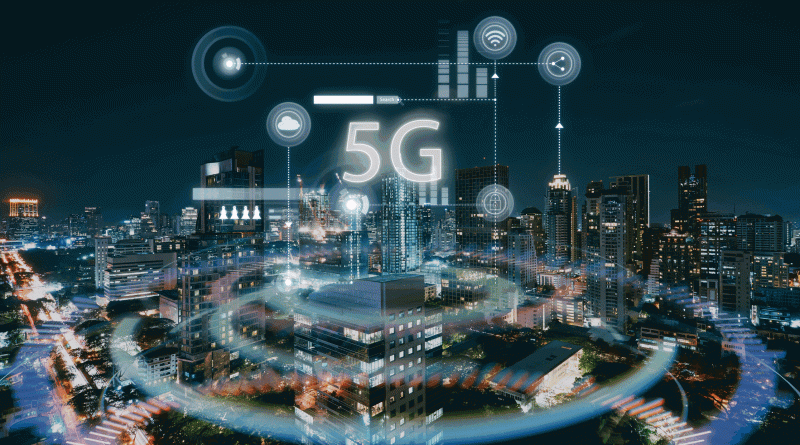Unlocking Seamless Connectivity: Exploring the Power of 5G DAS Solutions
Introduction
5G DAS Solutions Distributed Antenna System (DAS) refers to a network of antennas strategically placed throughout a building or area to enhance wireless coverage and capacity. Unlike traditional cellular towers, DAS distributes signals across a localized area, ensuring consistent connectivity.
5G DAS Solutions
In today’s digital age, where connectivity plays a crucial role in our daily lives, the emergence of 5G technology has paved the way for transformative advancements. Among these, 5G DAS (Distributed Antenna System) Solutions stand out as a cornerstone for ensuring seamless and efficient wireless communication. Let’s delve into the world of 5G DAS Solutions, understanding their significance, benefits, deployment, and future prospects.
Importance of 5G DAS Solutions
With the advent of 5G technology, the demand for robust infrastructure to support its capabilities has surged. 5G DAS Solutions play a pivotal role in meeting this demand by extending coverage, increasing capacity, and ensuring reliable connectivity in diverse environments.
Evolution from 4G to 5G
5G represents the fifth generation of mobile networks, succeeding the widely adopted 4G LTE technology. It promises significantly faster data speeds, lower latency, and greater bandwidth, revolutionizing various industries and consumer experiences.
Key features of 5G
5G technology boasts several key features, including ultra-fast speeds, ultra-reliable low latency communication (URLLC), massive machine-type communication (mMTC), and network slicing, catering to a wide range of applications from enhanced mobile broadband to IoT and mission-critical services.
Definition and purpose
DAS Solutions serve as a critical infrastructure component for enhancing wireless connectivity in indoor and outdoor environments. By distributing cellular signals through strategically placed antennas, DAS mitigates coverage gaps and ensures consistent network performance.
Types of DAS Solutions
There are various types of DAS Solutions tailored to specific requirements, including Active DAS, Passive DAS, and Hybrid DAS, each offering unique benefits and applications.
Overcoming challenges in 5G deployment
The implementation of 5G networks presents challenges such as signal attenuation, interference, and penetration loss, particularly in dense urban areas. 5G DAS Solutions address these challenges by optimizing signal distribution and enhancing network efficiency.
Enhancing coverage and capacity
5G DAS Solutions play a crucial role in extending coverage to areas with poor signal reception, such as indoor spaces, stadiums, airports, and campuses. Moreover, they augment network capacity to accommodate the growing demand for high-speed data services.
Improved network performance
By extending coverage and enhancing signal strength, 5G DAS Solutions ensure a seamless and uninterrupted user experience, facilitating faster downloads, smoother streaming, and reduced latency.
Enhanced user experience
Whether in crowded venues or remote locations, 5G DAS Solutions provide consistent connectivity, enabling users to stay connected and productive. This translates to improved customer satisfaction and loyalty for service providers.
Antennas
Antennas serve as the backbone of DAS Solutions, transmitting and receiving wireless signals. They come in various forms, including omni-directional antennas for wide coverage and directional antennas for targeted signal distribution.
Repeaters
Repeaters amplify and retransmit signals to extend coverage and overcome signal attenuation. They play a crucial role in maintaining signal strength across large areas, ensuring uniform coverage and quality of service.
Fiber optics
Fiber optics serve as the transmission medium for carrying signals between DAS components. With their high bandwidth and low latency, fiber optics enable efficient data transmission and support the bandwidth requirements of 5G networks.
Design considerations
The deployment of 5G DAS Solutions requires careful planning and design to ensure optimal coverage and performance. Factors such as building layout, traffic patterns, and RF interference must be taken into account during the design phase.
Installation process
Once the design is finalized, the installation process involves mounting antennas, running cables, and configuring DAS components. Skilled technicians work collaboratively to execute the installation efficiently while minimizing disruptions to ongoing operations.
Examples of organizations utilizing 5G DAS Solutions
Several organizations across various industries have successfully deployed 5G DAS to address their connectivity needs. From healthcare facilities improving patient care to retail establishments enhancing customer engagement, the applications of 5G DAS are diverse and impactful.
Cost considerations
While 5G DAS Solutions offer significant benefits, they entail upfront costs for equipment procurement, installation, and maintenance. Organizations must carefully evaluate the return on investment and total cost of ownership to justify the deployment of 5G DAS .
Maintenance and scalability
Maintaining and scaling 5G DAS Solutions require ongoing monitoring, upgrades, and expansions to accommodate evolving network demands. Organizations must establish robust maintenance protocols and scalability plans to ensure continued performance and reliability.
Advancements in technology
As 5G technology continues to evolve, so will the capabilities of 5G DAS Solutions. Advancements in antenna design, signal processing, and network optimization will further enhance the performance and efficiency of DAS deployments.
Potential applications
The future of 5G DAS holds promise for a wide range of applications, including smart cities, industrial automation, and immersive experiences. By leveraging the power of 5G connectivity, DAS Solutions will drive innovation and unlock new opportunities across industries.
Conclusion
In conclusion, 5G DAS Solutions represent a critical enabler of the next-generation wireless ecosystem, offering enhanced coverage, capacity, and connectivity. By addressing the challenges of 5G deployment and delivering tangible benefits to users and organizations alike, DAS Solutions play a pivotal role in shaping the future of wireless communication.
FAQs
What is the difference between DAS and traditional cellular towers?
DAS distributes signals through a network of antennas, providing localized coverage, whereas traditional cellular towers serve larger geographic areas.
How does 5G DAS Solutions improve network performance?
By extending coverage and increasing capacity, 5G DAS Solutions ensure consistent connectivity and faster data speeds for users.
What are the cost implications of deploying 5G DAS Solutions?
While initial costs may be significant, the long-term benefits in terms of improved user experience and operational efficiency justify the investment in 5G DAS .
Can 5G DAS Solutions be tailored to specific industry requirements?
Yes, 5G DAS can be customized to meet the unique connectivity needs of various industries, from healthcare and education to retail and hospitality.
What role will 5G DAS Solutions play in the evolution of smart cities?
5G DAS will serve as the backbone of connectivity infrastructure in smart cities, enabling IoT deployments, intelligent transportation systems, and public safety applications.



